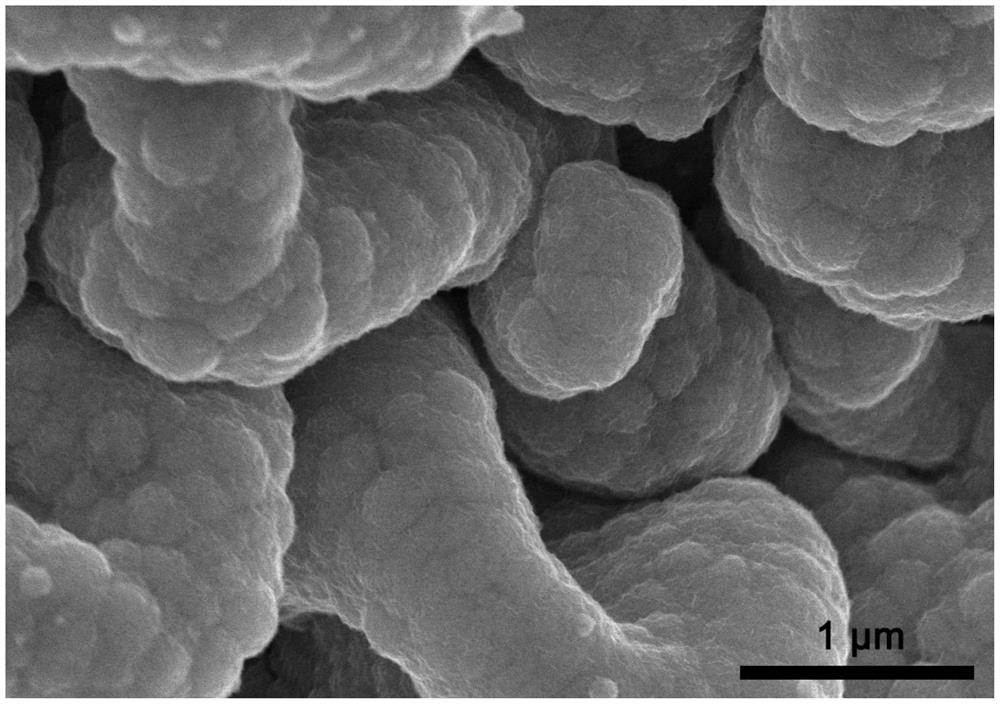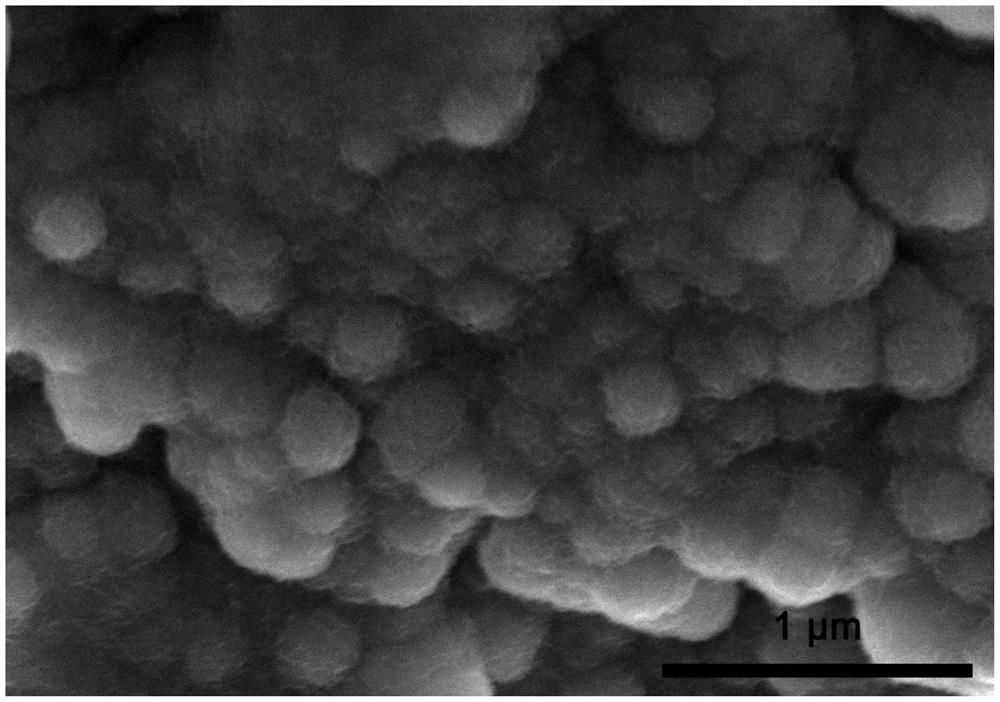Bimetal-based composite catalyst with fluffy structure as well as preparation method and application of bimetal-based composite catalyst
A composite catalyst, bimetallic technology, applied in metal/metal oxide/metal hydroxide catalysts, chemical instruments and methods, physical/chemical process catalysts, etc., can solve the problems of limited storage, high price, application limitations, etc. Achieving the effect of increased surface area, ease of operation, and improved reaction kinetics
- Summary
- Abstract
- Description
- Claims
- Application Information
AI Technical Summary
Problems solved by technology
Method used
Image
Examples
Embodiment 1
[0044] 1) Weigh 0.05g g-C 3 N 4 Place in 80mL deionized water and ultrasonically disperse for 30min to form dispersion system A;
[0045]2) Add 0.005mol ferrous sulfate heptahydrate and 0.005mol cobalt chloride hexahydrate to the dispersion system A in the above step 1) and stir to make them all dissolve to form dispersion system B;
[0046] 3) Add 4.5 g of glycine to the dispersion system B formed in the above step 2), stir to dissolve it completely, adjust the pH value to 12, and obtain dispersion system C;
[0047] 4) Slowly add sodium borohydride into the dispersion system C, and with magnetic stirring, to obtain solution D. After the solution D is kept at a temperature of 25° C., add pretreated nickel foam to continue the reaction;
[0048] 5) After the reaction is over, the nickel foam is taken out, washed with deionized water and ethanol successively and dried in vacuum to obtain a bimetallic matrix composite catalyst;
[0049] Wherein, step 4) in the solution D, the...
Embodiment 2
[0055] 1) Weigh 0.05g g-C 3 N 4 Place in 80mL deionized water and ultrasonically disperse for 30min to form dispersion system A;
[0056] 2) Add 0.005mol ferrous sulfate heptahydrate and 0.005mol cobalt chloride hexahydrate to the dispersion system A in the above step 1) and stir to make them all dissolve to form dispersion system B;
[0057] 3) Add 4.5 g of glycine to the dispersion system B formed in the above step 2), stir to dissolve it completely, adjust the pH value to 12, and obtain dispersion system C;
[0058] 4) Slowly add sodium borohydride into the dispersion system C, and with magnetic stirring, to obtain solution D. After the solution D is kept at a temperature of 25° C., add pretreated nickel foam to continue the reaction;
[0059] 5) After the reaction is over, the nickel foam is taken out, washed with deionized water and ethanol successively and dried in vacuum to obtain a bimetallic matrix composite catalyst;
[0060] Wherein, step 4) in the solution D, th...
PUM
 Login to View More
Login to View More Abstract
Description
Claims
Application Information
 Login to View More
Login to View More - R&D
- Intellectual Property
- Life Sciences
- Materials
- Tech Scout
- Unparalleled Data Quality
- Higher Quality Content
- 60% Fewer Hallucinations
Browse by: Latest US Patents, China's latest patents, Technical Efficacy Thesaurus, Application Domain, Technology Topic, Popular Technical Reports.
© 2025 PatSnap. All rights reserved.Legal|Privacy policy|Modern Slavery Act Transparency Statement|Sitemap|About US| Contact US: help@patsnap.com



